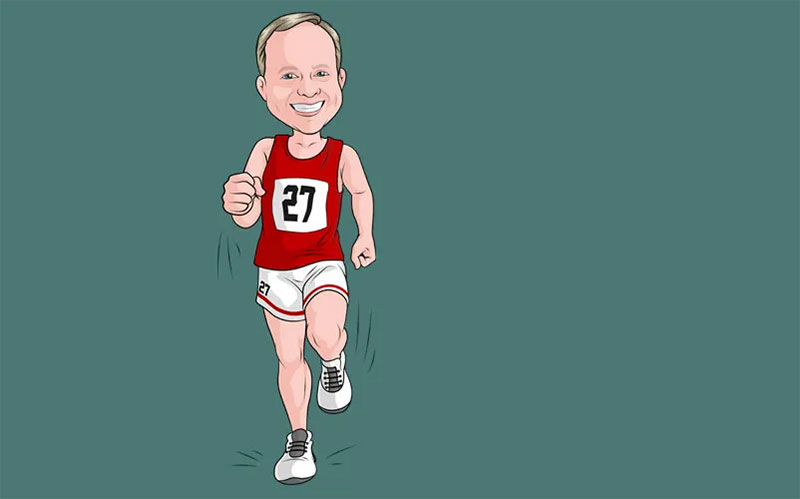How to Get the Most Out of Your Employees Through Better Teaching

Workplaces, in general, have been learning that employee development is crucial to retaining talent, but how you develop your employees needs to be strategic. There are four main learning styles that most people can identify with. Knowing how each of your employees learns best not only communicates you care but will result in buy-in that will shape your company for the better.
The workplace is changing in a lot of ways. Some of this is due to the pandemic, while other changes are part of a natural progression. One thing that is changing is the general awareness that not all people learn the same. For the longest time, workplaces have implemented training programs without considering how people learn best. For example, some people learn better by doing the work, while others might learn better by reading a manual.
Catering to the needs of employees when it comes to learning styles is great for them, but it is also great for your business. In fact, an overwhelming majority of workers say that they would stay with their company longer if the company invested in their career. Well, a great way to do that is to learn how they learn.
Especially now, with a shortage of workers and historic turnover rates, companies need to be planning for their future, and that future starts with knowing each individual employee and what makes them tick. That is why it is crucial for companies to invest in custom learning and corporate training solutions.
The Different Styles of Learning
Before you can accommodate your employees, you need to know the different learning styles. To do this, you can call upon the VARK model. This model contains four different types of learning — visual, auditory, reading/writing, and kinesthetic. Some employees will fit nicely into one box, while others might take a little from one and a little from another. Here’s how the VARK model breaks down.
V is for Visual
Visual learners tend to do better with graphs, diagrams, charts, or maps. When designing a manual for a visual learner, it is more important to focus on the aesthetics of the material as opposed to the content. These learners do better with symbols and representation than they would, say, with a lecture or physically doing the job. Graphs, diagrams, charts, and maps will help visual learners comprehend complex procedures and processes by giving them something they can look at and digest.
A is for Auditory
Auditory learners (sometimes referred to as “aural” learners) learn best through lectures, podcasts, or engaging in group discussions. These learners can understand concepts not only by hearing what they need to do but also by discussing it with others. Generally, auditory learners enjoy being paired up with other employees or a strong mentor who can guide them through a difficult task.
R is for Reading (and writing)
People who learn best through reading and/or writing rely on the written word to understand what they are expected to do at a job. This includes things like lists, manuals, or reports. This type of worker will thrive when tasked with research. This is also the type of employee who would excel at documentation or putting together a presentation. What you will find with reading/writing learners is that they are avid note-takers and generally retain information well just by reading something.
K is for Kinesthetic
Kinesthetic learners learn by doing. They need to apply themselves to fully understand what is expected of them and how to perform tasks. Demonstrations are great for kinesthetic learners but should always be followed up with an interactive activity. This type of employee generally has broad interests and is always eager to learn and try something new. They will typically be more than happy to switch gears, even if a project is outside their comfort zone. During the training process, kinesthetic learners thrive when allowed to shadow an experienced team member and practice after learning, reading, or watching something.
How to Accommodate Different Learning Styles
It should be plain to see that having just one training program won’t cut it anymore. For your employees to reach their true potential, you want to meet them where they are. By showing care and compassion for how they can best learn their duties, you are communicating that they are more than the work they do for your company, but rather human beings worth investing in. This is crucial because you want to retain your talent instead of spending time and money training new employees over and over again — as we have seen so many companies doing lately.
Accommodating different learning styles means that you will widen your talent pool as well. A broader talent pool gives you more opportunities to find and retain talent. This will also help bring in new ideas to your company — ideas that could shape your company for the better.
Implementing different training styles shouldn’t be too hard, either. If you already have a training manual, you have all the necessary information to accommodate different learning styles. For visual learners, illustrate the workflow. For auditory learners, create a podcast with team leaders discussing what is expected on the job. For kinesthetic learners, have them shadow a team lead or an experienced employee. Implementation doesn’t need to be expensive or difficult and can happen much more quickly than you’d think. The first step is awareness and hopefully, after reading this article, you understand the differing needs of your employees and what you can do to support them individually.
The workplace is changing, and it is changing for the better. By showing your employees that you care about their success, you are ensuring your own.
Written by Jim Hartigan.
Have you read?
Assume You’re the Problem by Leo Bottary.
How to be happy: the seven steps to take right now by Catherine Bowyer.
Building Psychological Safety for CEOs and Companies by Parul Agrawal.
How He Built It: Dr. Jay Feldman & The Fastest Growing PR Firm in the US.
Female Founders Changing The Future of Their Industries.
Three Ways Your Data is Leaking in Advertising and How to Avoid It by Dan Frechtling.
Bring the best of the CEOWORLD magazine's global journalism to audiences in the United States and around the world. - Add CEOWORLD magazine to your Google News feed.
Follow CEOWORLD magazine headlines on: Google News, LinkedIn, Twitter, and Facebook.
Copyright 2025 The CEOWORLD magazine. All rights reserved. This material (and any extract from it) must not be copied, redistributed or placed on any website, without CEOWORLD magazine' prior written consent. For media queries, please contact: info@ceoworld.biz








